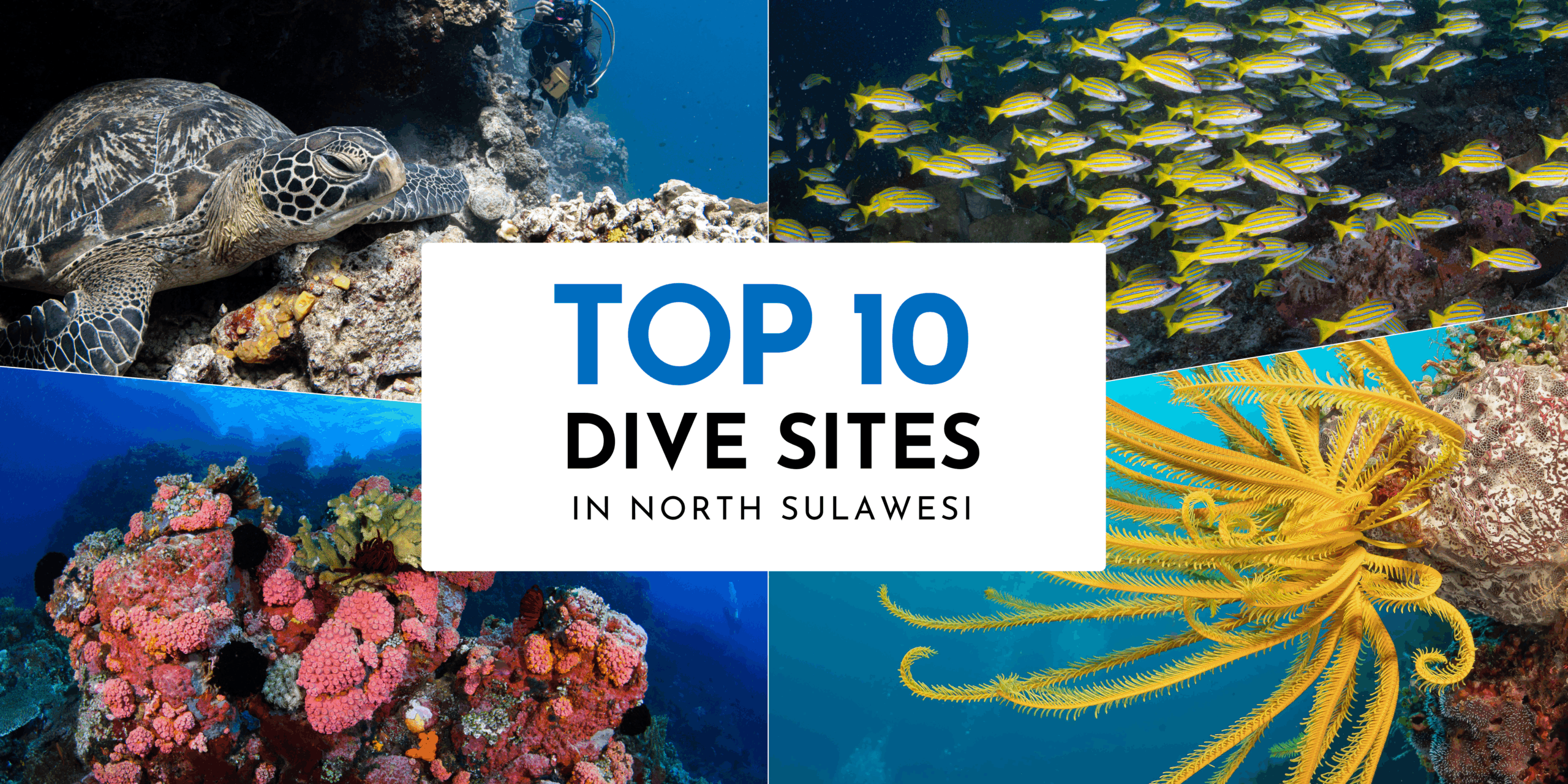
Uncovering Crab Species in North Sulawesi Ecosystem
If you’re fascinated by the incredible array of marine life found in North Sulawesi’s waters, you won’t want to miss our in-depth guide to the area’s crustaceans. In this article, we’ll be shining a spotlight on one of the most captivating creatures of the underwater ecosystem – the crab.
From the brightly colored and intricately patterned decorator crab to the beautiful harlequin crab, we’ll take a closer look at the fascinating behavior, habitat, and characteristics of these intriguing creatures. Whether you’re an experienced diver or simply have a love for the ocean and its inhabitants, you’re sure to find something to inspire you in our comprehensive guide to North Sulawesi’s crabs.
SPOTTED PORCELAIN CRAB (NEOPETROLISTHES MACULATUS)

There are around 300 species of porcelain crabs which all share the same common characteristics but the spotted variety is the one we encounter most frequently in North Sulawesi. Porcelain crabs are small crustaceans, usually with body widths of less than 15 mm (0.59 in) and they are fragile crustaceans which will often shed their limbs to escape predators, hence their name. The lost appendage can grow back over several months.
In North Sulawesi the most common places we find this species is among the stinging tentacles or under the basal disk of carpet anemones. They have a bright white to creamy colored body and legs with the carapace being decorated with red spots. As they are often in anemones, taking pictures can be tricky if there is a defensive anemone fish occupying the same host!
Dive sites: Porcelain crabs are easy to find at all of our dive sites and there is often more than one in a single anemone. The trick is to look down low into the anemone to the base of the tentacles. Ask our Dive Guides to help as these small crabs are incredibly photogenic.
RETUSA DECORATOR CRAB (CAMPOSCIA RETUSA)
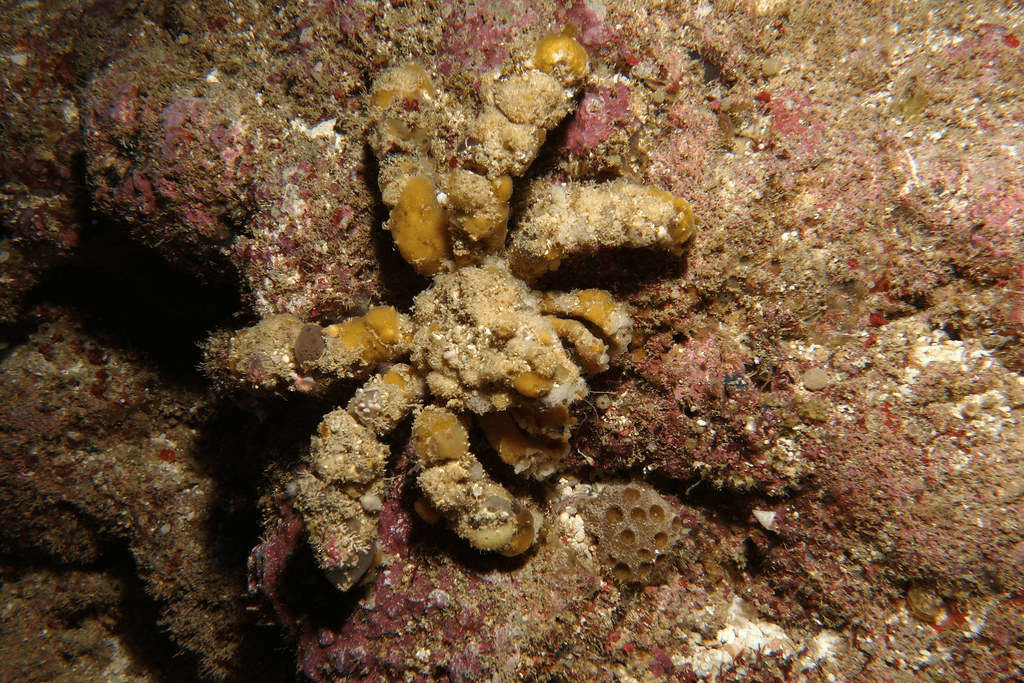
This crab is also known as the Spider Decorator crab and it is THE master of disguise and unless it moves it is almost impossible to spot. It attaches algae, plants, coral rubble, shells, stones and even living organisms to its body and legs to disguise itself. The carapace is only around 3 cm but with the legs included this species of crab can measure up to 10 cm.
This crab is mainly spotted at night as this is when it is active and so easiest to recognise. During the day time when it is largely sedentary it is very difficult to spot among the reef. They are a particularly tricky photography subject because unless the eyes are obvious and in focus it is difficult to recognise the crab underneath the elaborate decoration!
Dive Sites: This species of crab is relatively common despite its extensive efforts at camouflage. The best sites for sightings are the House Reef in Manado, Pintu Colada in Lembeh and Batu Mandi in Bangka.
HARLEQUIN CRAB (LISSOCARCINUS LAEVIS)
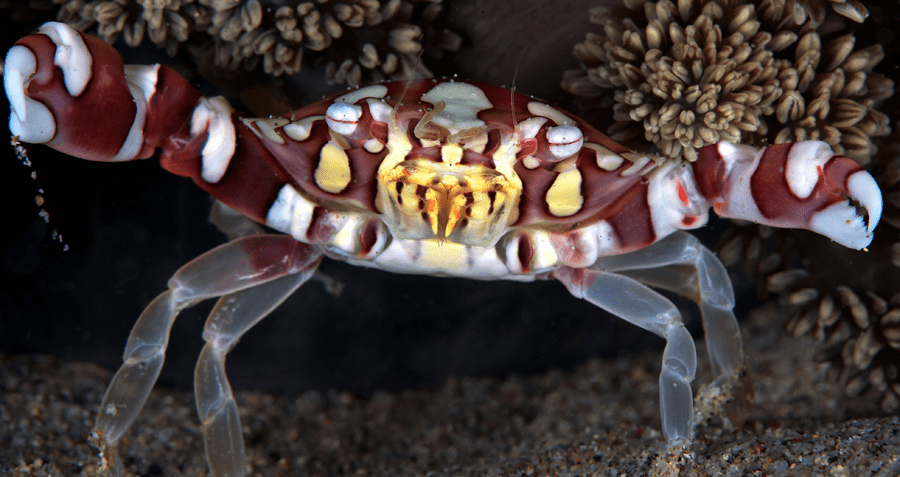
This beautiful species of crab is also referred to as the Harlequin “Swimming” Crab and it lives in symbiosis with tube anemones where it tends to hide away at the base of the anemone, hidden and protected by the tentacles. Its exquisite color pattern varies from a brown to red-orange color with distinctive white spots on its carapace and white bands on its claw arms.
This is a shy species and it will dance (circles) around the base of the anemone to hide from predators (and photographers). If threatened it will even retreat into the sand from which the anemone is growing. The carapace of this species can grow up to 4 cm and it is found at depths of up to 30 meters. It is a relatively rare species and a special find here in Sulawesi. It’s also a stunning photography subject.
Dive Sites: Any dive site that has tube anemones is a potential hotspot for this species but we recommend Hairball 1, 2, and 3 in Lembeh, City Extra and Bethlehem in Manado, and Peter’s Sponge in Bangka.
CRYPTODOMIA SPONGE CRAB (CRYPTODOMIA SP.)
These sponge crabs are a shallow water species of crustaceans which bear similarities to hermit crabs. They live in a cavity which they create on the underside of their host sponge – they cut out a fragment from the sponge and trim it to their own shape using their claws. Their last two pairs of legs are shorter than the other legs and bend upward over their carapace (shell), to hold the sponge in place.
The sponge grows along with the crab, providing a consistent shelter – and protection! Because they are almost completely concealed by the sponge they can be tricky to spot. The best time for finding this species is during night dives when they are most active.
Dive Sites: The best sites for finding Cryptodomia are night dives at Air Prang in Lembeh, Murex House Reef in Manado and Sabora in Bangka.
MOSAIC BOXER CRAB (LYBIA TESSELATA)
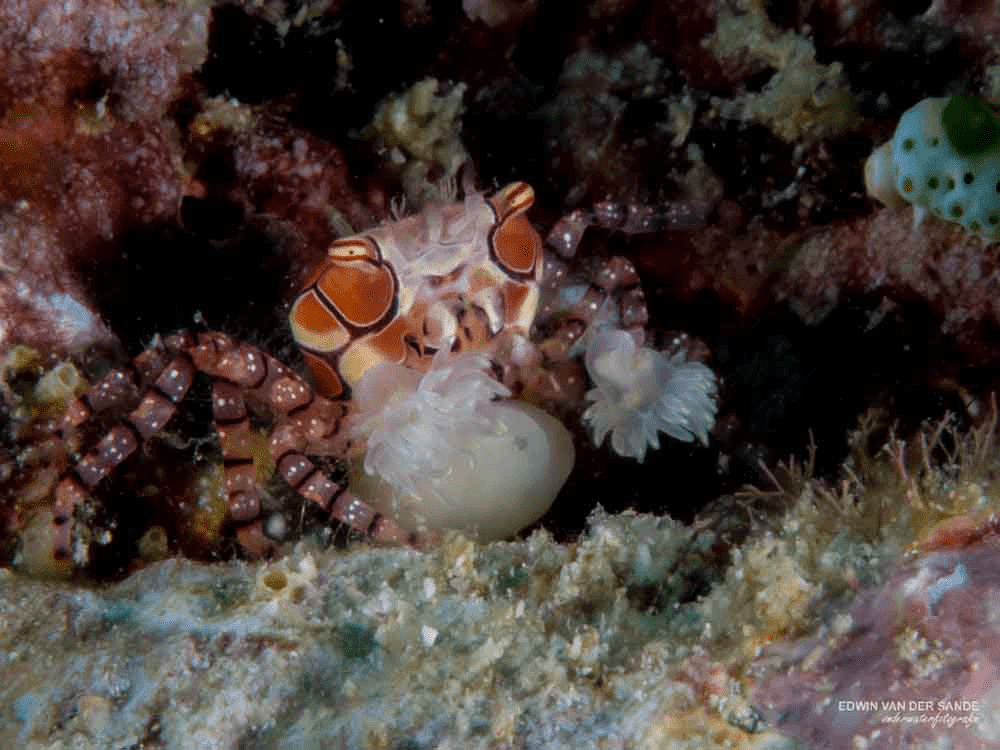
This rare species of crab is usually found hiding under small rock piles. Its carapace has a distinct “mosaic-like” white, black and orange color pattern. Boxer crabs take their name from the anemones which they carry in their claws (like boxers’ gloves) and live in symbiosis with.
The anemones stinging cells protect the boxer crab against predators and in return, the boxer crab provides food for its protectors. They have a body size of about 1.5 cm and because they move very fast they can be difficult to find. They are also referred to as the “pom-pom” crab for those who see cheerleading pom-poms rather than boxing gloves
Dive Sites: This species is a rare treat and the sites where we have most success in finding them are Nudi Falls in Lembeh, Tanjung Kelapa in Manado and Sahaung 1 in Bangka.
BOX CRAB (CALAPPA SP.)
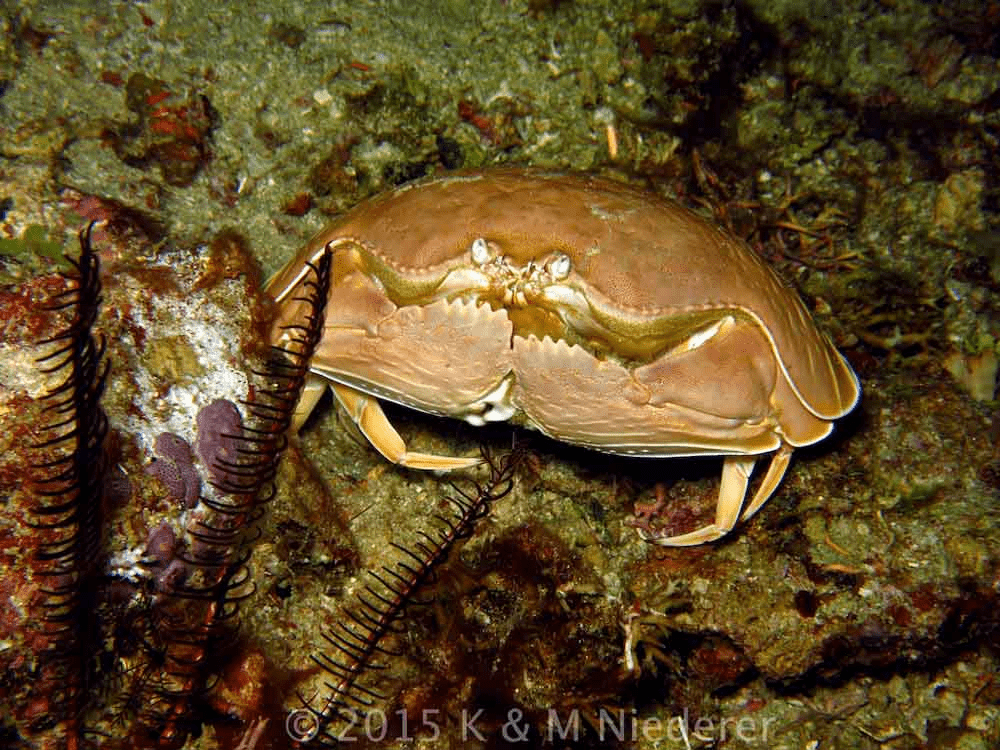
Box crabs reside at dive sites which have sandy and silty bottoms where they can easily dig and burrow. The box crab has several color variations and its shiny carapace (shell) can range from creamy white through to orange, reds and browns, and in some individuals features dark spots.
Box crabs grow up to 15 cm and have very strong claws which they use to open the shells of molluscs on which they feed. Sightings are occasional but not common and most sightings tend to be on night dives. We have several different species of box crab here in North Sulawesi.
Dive Sites: The best sites for box crab are night dives at Bulo or City Extra in Manado, all of the Hairball sites in Lembeh and Peter’s Sponge in Bangka.
Murex Dive Resorts in North Sulawesi
North Sulawesi’s underwater ecosystem is home to an incredible variety of marine life, including a vast array of fascinating crab species. Whether you’re an experienced diver or a lover of marine life, North Sulawesi’s crabs are sure to captivate you.
If you want to experience the wonder of North Sulawesi’s crab population up close and personal, consider booking a dive with Murex Dive Resorts. Our expert guides will lead you to the best crab-spotting locations and ensure that you have a safe and unforgettable diving experience.
Don’t miss out on the opportunity to witness these incredible creatures in their natural habitat – book your dive with Murex today! Or better yet, join our Passport to Paradise adventure, going around North Sulawesi (Bunaken – Bangka – Lembeh) in one trip! Contact us for more information or to make a booking: reservations@murexresorts.com.


